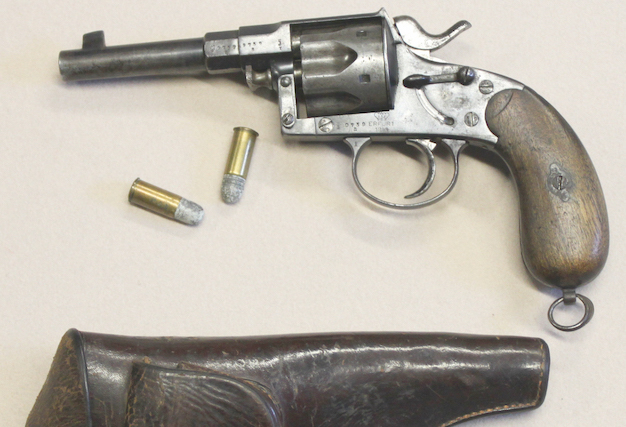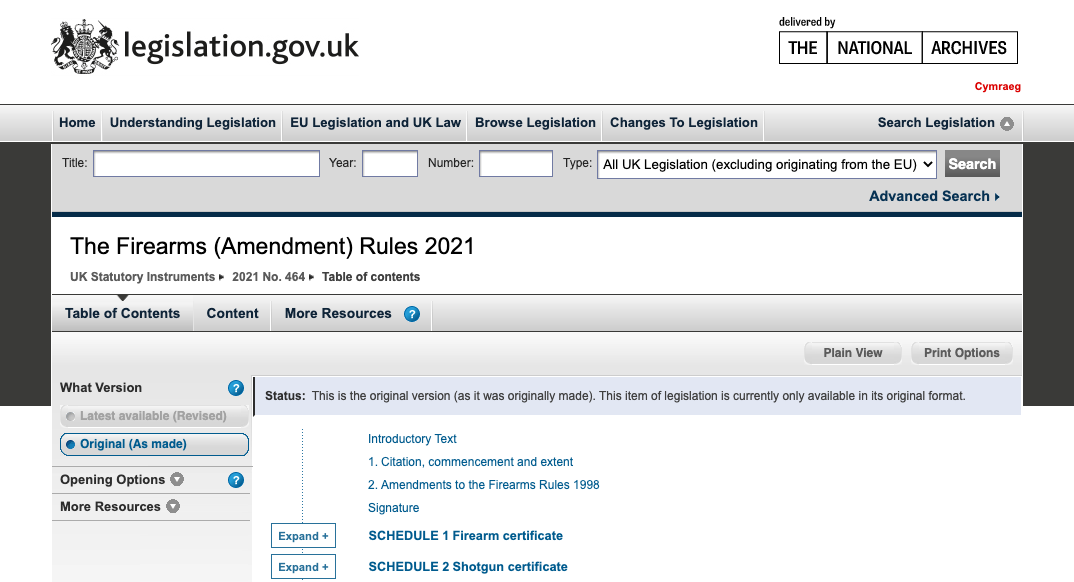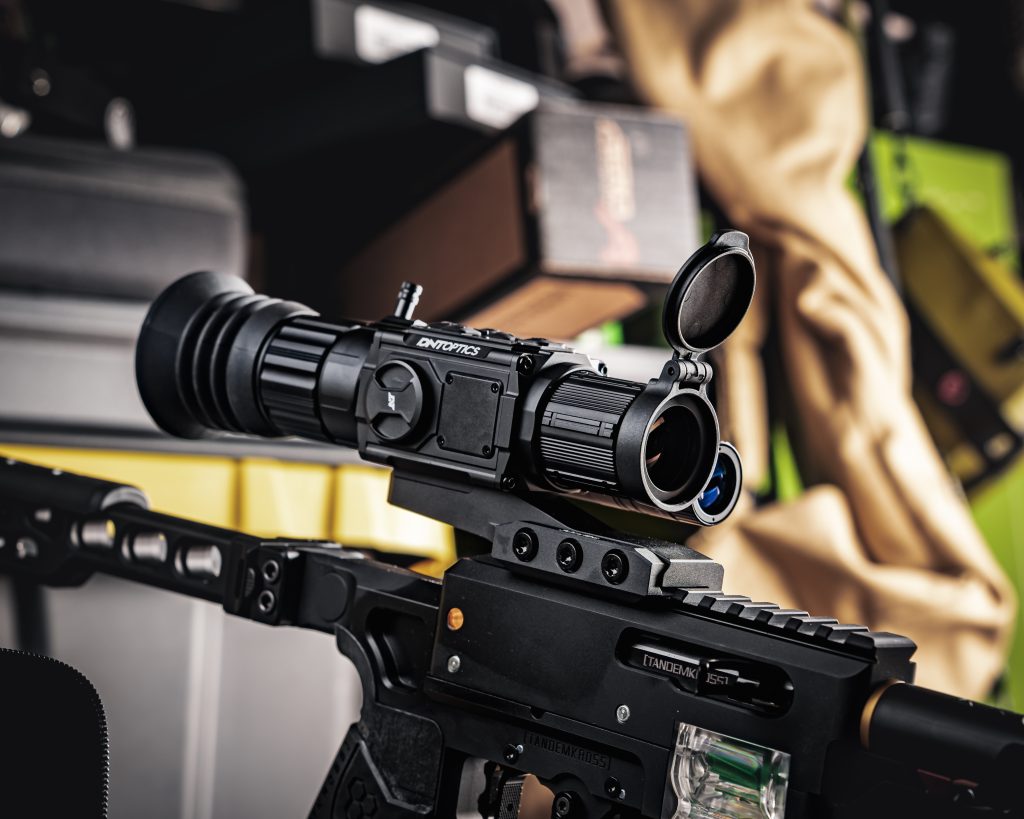Win CENS ProFlex DX5 earplugs worth £1,149 – enter here
Changes to antique firearms regulations
 A variation on a Firearm Certificate will be needed to own this 10.6mm German M83 revolver after 21st September.
Photo Credit: Bill Harriman
A variation on a Firearm Certificate will be needed to own this 10.6mm German M83 revolver after 21st September.
Photo Credit: Bill Harriman
With the passage of the Antique Firearms Regulations 2021, British law includes the definition of what constitutes an antique firearm for the first time in legal history.
Previously, there was no such definition, with the law relying on the common or usual meaning of the word ‘antique’ — in other words, something having some age or something ‘not of our times’ as the Oxford English Dictionary would have it. This vagueness was regarded as unsatisfactory by the Government, especially when criminals started to exploit it as a defence.
Consequently, in 2015, the Law Commission was asked to look into the matter. It recommended that a definition of an antique firearm be enshrined in law. The Government accepted this and, to cut a long story short, the Antique Firearms Regulations 2021 became law in March this year.
As an overarching principle, the new regulations provide that a firearm can only be an antique if it was made before 1 September 1939. In addition, it must also be one of the following:
- A muzzle-loader — of any ignition type
- Of a transitional ignition type; for example, a pinfire, a needlefire, a capping-breechloader and so on.
- Chambered for a rimfire cartridge — other than the ubiquitous .22, .23, 6mm or 9mm.
- Chambered for a centrefire cartridge on the list in the schedule attached to the regulations.
Even if a firearm qualifies as antique, it is only exempt from the provisions of the Firearms Act if it is possessed as a curiosity or an ornament. While these words have to be interpreted according to their common or usual meaning, there is near universal agreement that this does not extend to firing.
When it drew up the schedule, the Government did not include seven of the revolver cartridges that had been in the Obsolete Calibre List in the Home Office Guide on Firearms Licensing Law. For clarity, I list these below.
- 11mm French M1873 (Army)
- .44 Smith & Wesson Russian
- .442 revolver
- 10.6mm German Reichsrevolver
- .41 Colt
- 9.4mm Dutch
- .320 British
Since their inclusion on that list in 2000, revolvers chambered for these cartridges have become very popular with collectors. The Government recognised that a blanket prohibition would simply criminalise people who had previously followed public policy. Consequently, the transition arrangements allow for existing owners to apply for or vary a firearm certificate in order to retain their property legally.
The application for the certificate or variation must be made before midnight on 21 September, so the clock is ticking. Alternatively, any such revolver could be sold through a Section 5 dealer, surrendered to the police or, horror of horrors, deactivated.
Historic handguns
The application will be for a historic handgun(s) held under Section 7(1) of the Firearms (Amendment) Act 1997. The test for such firearms is that they were made before 1 January 1919. Indeed, I suspect that very few revolvers chambered for the cartridges on the aforementioned list will have been made after that date.
The usual suitability criteria for the grant of a firearm certificate will apply. However, applicants do not have to satisfy the ‘good reason’ test as they already possessed the revolver(s) before the law changed. Existing firearm certificate holders are sitting pretty as the police cannot refuse to grant a variation for a revolver previously held as an antique, providing it satisfies the 7(1) criteria. Existing shotgun certificate holders are also in the clear as they satisfy the suitability criteria to be granted a firearm certificate; there is a tiny difference between the tests, but they are essentially the same.
Apply as soon as possible
My advice is not to delay and to make the application as soon as possible; undoubtedly there will be a big rush as the deadline looms. The application forms can be downloaded from the BASC website.
You may not like the new law, but you need to obey it. The consequences of not doing so are very serious. Your lovely antique .44 Smith & Wesson revolver will magically change into a prohibited weapon on 22 September. If you are subsequently convicted of possessing it unlawfully, you will go down for five years. Remember the old legal maxim ‘Ignorantia lex non excusat’. You have been warned.
Related Articles
Get the latest news delivered direct to your door
Subscribe to Shooting Times & Country
Discover the ultimate companion for field sports enthusiasts with Shooting Times & Country Magazine, the UK’s leading weekly publication that has been at the forefront of shooting culture since 1882. Subscribers gain access to expert tips, comprehensive gear reviews, seasonal advice and a vibrant community of like-minded shooters.
Save on shop price when you subscribe with weekly issues featuring in-depth articles on gundog training, exclusive member offers and access to the digital back issue library. A Shooting Times & Country subscription is more than a magazine, don’t just read about the countryside; immerse yourself in its most authoritative and engaging publication.








